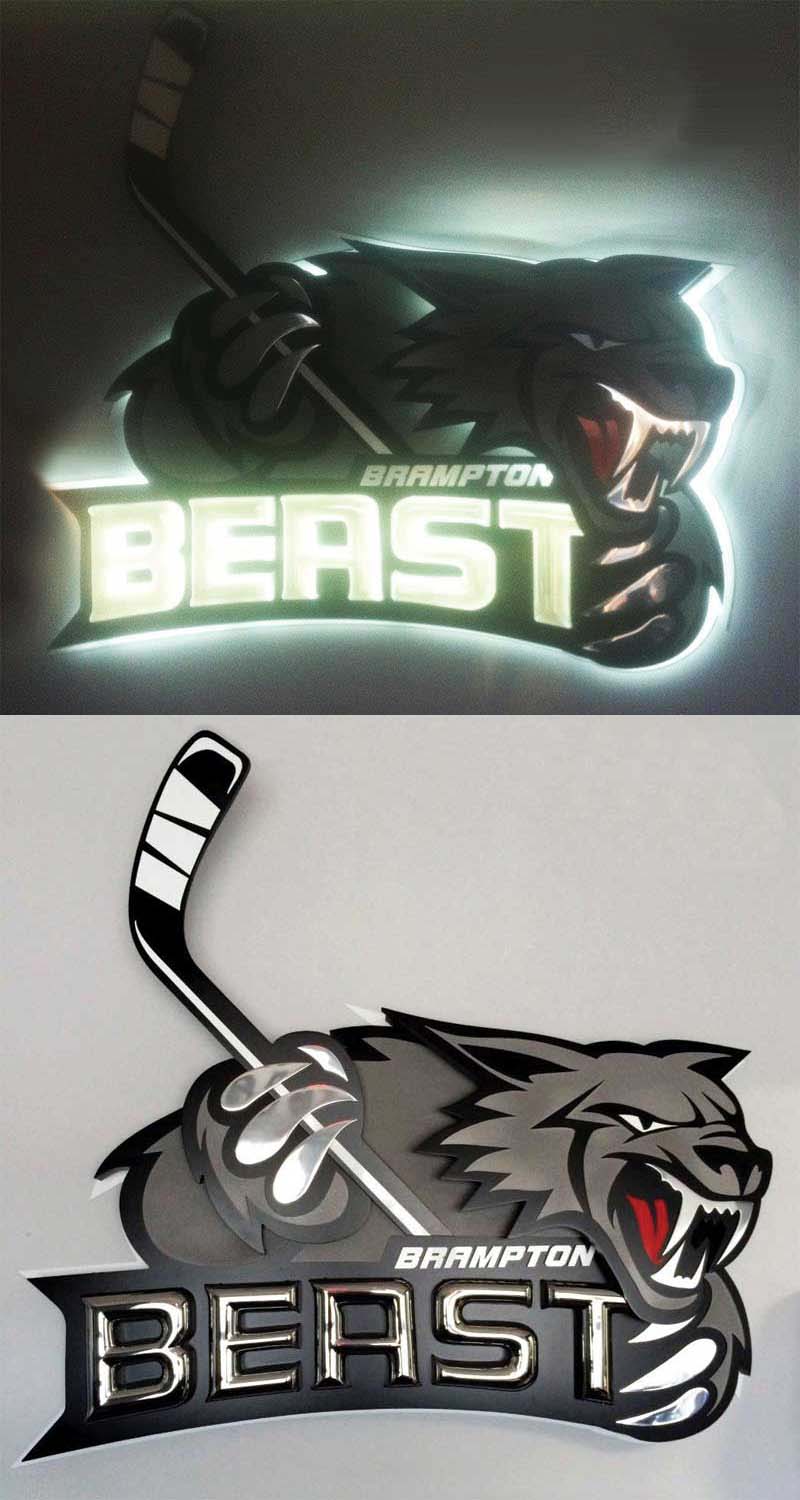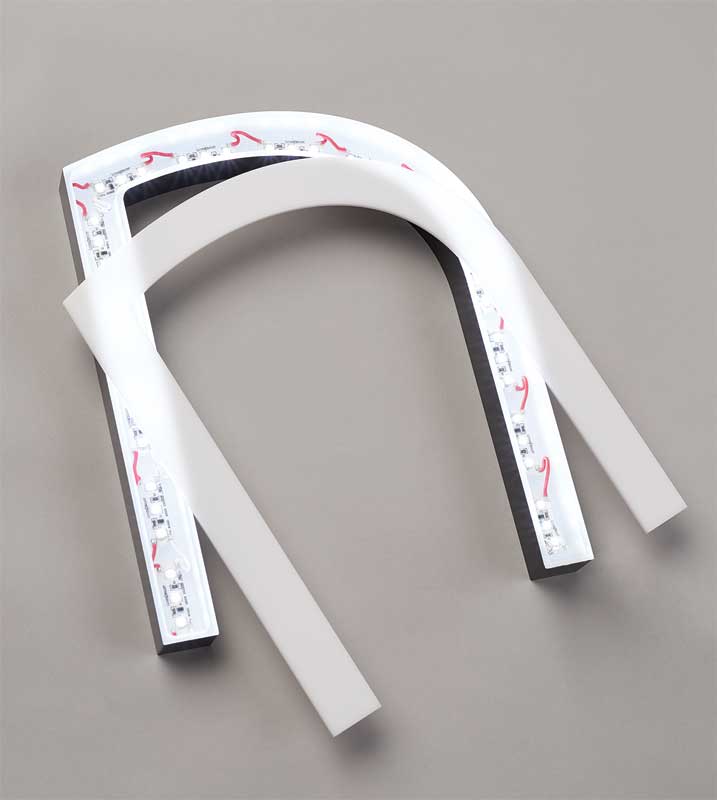Choosing LEDs
The LED modules used in signs are typically 12-V direct current (DC) systems, approved by Underwriters Laboratories (UL). While some are intended to populate large sign panels, others are engineered with wider viewing angles to help light smaller, more compact spaces, including narrow channel letter strokes.
Thus, the design of a sign will dictate which types of LEDs should be used to illuminate it. LED selection is a matter of identifying the correct light intensity and viewing angle.
As for colour, the LED’s wavelength should be matched to that of the translucent plastic letter, in the case of a face-lit application, or to the desired halo appearance.
The same LEDs can certainly be used for a broad variety of applications, but it is best to consult with suppliers to find out which will be best for a specific design.
Metals and plastics
LEDs can be installed effectively within a wide variety of UL-recognized materials, including—but not limited to—the following:
- Fabricated metals: aluminum, brass, bronze, copper, stainless steel or titanium-coated stainless steel.
- Cast metals: aluminum or bronze.
- Plastics: cellulose acetate butyrate (CAB)
or acrylic.
There are advantages to using some of these materials over others. If a sign design calls for the use of plastic cans, for example, it will be important to select specific LEDs that do not require a metal can to serve as their ‘heat sink.’ It will also be important to choose a plastic—such as CAB—that is already approved for use in illuminated signage.
Fabricated metals
With fabricated metals, there are many options for channel letters, from thin-gauge trim-cap aluminum to welded or soldered premium-gauge aluminum, stainless steel (including the titanium-coated variations), brass, copper and bronze, all of which can provide a more elegant, sophisticated appearance than plastic, for both day and night viewing.
Trim-cap aluminum channel letters are typically face-lit and 76 or 127 mm (3 or 5 in.) deep. They are produced with 1-mm (0.04-in.) or 1.6-mm (0.06-in) aluminum returns, which are typically finished with paint, and feature riveted or stapled backs and trim cap attached to translucent plastic faces. While they may not appear highly robust from up close, they provide a good option for economical signage that can be produced quickly.
Premium-gauge aluminum channel letters are welded, face- or halo-lit and available in standard depths ranging from 51 mm (2 in.) to 152 mm (6 in.), with greater depths available for special projects. The material is sufficiently strong for channel letters that are 0.4 to 3 m (16 to 120 in.) tall or even larger. For face-lit applications, a ‘shoebox’ cover can be produced from the same gauge aluminum as the can, with a narrow outline to hold the translucent plastic face in place. This cover overlaps the can and is attached with screws to provide sharp, crisp corners, ensuring both a distinguished daytime look and an elegant night viewing appearance. There are also ‘trimless’ face-lit applications, i.e. where the edge of the face is illuminated along with the rest of it. There are painted, brushed and anodized finishes available for face- and halo-lit aluminum letters.
Premium stainless steel letters are best produced with a continuous bead of solder around the inside perimeter of their faces. They can be face- or halo-lit at a wide variety of depths, from 25 to 152 mm (1 to 6 in.).
Stainless steel letters can be produced as small as 51 mm (2 in.), but due to the size limitations of LED modules, they are typically required to be at least 152 mm (6 in.) for illumination. For face-lit applications, a narrow outline is required within the design to secure the translucent plastic face in place. Like premium-gauge aluminum, stainless steel provides sharp, crisp corners and trimless face applications are also available. Polished, brushed, titanium-coated and painted finishes are the most popular options.







